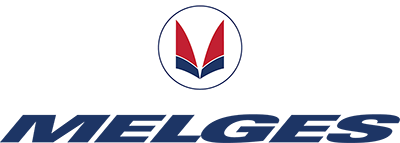If you sail in a class that allows you to “ping” the starting line, then you have probably fallen into the trap of doing so incorrectly. An inaccurate ping can equate to being off the line by as much as 10 meters. This can cause you to either be well over the line or well under it – neither of which is a good outcome. Use the following tips to give you a competitive edge on your next start.
- Keep it Slow: The latency of the Velocitek Pro-Start’s GPS requires you to approach the line at a slower speed in order to get the most accurate GPS reading. If you sail past the line at full – or even half speed – you are risking an inaccurate ping.
- Ping from the Bow: This may seem obvious, but it is amazing how many sailors ping the line with their bows 10 feet over or under the line because they’re sighting from the instrument, itself. It is best practice to have your bowman go forward and signal the moment your bow is on the line.
- Sail on a Close Haul: For the most accurate distance-to-line measurement, you will want to ping while sailing a close-hauled course. Pinging head-to-wind will increase the distance your GPS is from the line when you ping causing an inaccurate reading of the line’s location.
- Upgrade your GPS/ Compass: New GPSes minimize latency, which allows you to ping accurately while underway as well as give you a real-time reading of your location on the line. Older compasses have a small amount of lag as you approach the line giving you more of a ballpark reading rather that an accurate one.
We recommend the Vakaros Atlas Tactical Compass featuring a magnetic compass resulting in more accurate readings. Order today at shop.melges.com and receive free shipping!
GPS equipped compasses are legal in the following Melges classes: A Scow, E Scow, C Scow, Melges 40, IC37, Melges 32, Melges 24, Melges 20
Racing an MC Scow or dinghy? Check out the Tacktick Micro Compass and Velocitek Prism Racing Compass.
